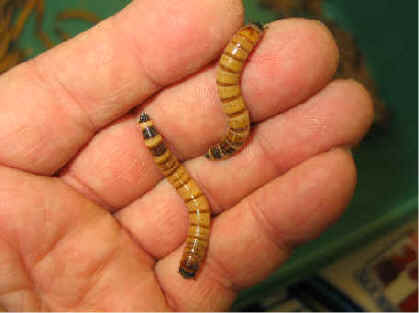
Replace the bread, potato and cabbage as necessary. The beetles will lay eggs which hatch into mealworms and so on.After a few weeks the mealworms will turn into creamy pupae, then into little black beetles. Introduce two or three hundred mealworms into the prepared tin.Keep the tin at room temperature, not in hot sun. You can put a raw cabbage leaf on top if you like. Put a slice or two of bread and raw potato, followed by another two layers of sacking/bran/bread/potato, like a three-decker sandwich. Punch small holes in the lid for ventilation, place a layer of old hessian sacking in the bottom and sprinkle fairly thickly with bran.You will soon have plenty of Superworms to feed to your animals.It can become quite expensive to constantly buy mealworms, so you might want to grow your own.įor a constant supply of mealworms, prepare a large circular biscuit tin as follows: Repeat the process above with your beetles and remove them every 2 weeks onto a new bin. The worms are so small when they hatch that you probably wont see them for about another 2 weeks. Your new eggs will hatch in the original bin, and the oatmeal will be full of tiny worms. After weeks of allowing your beetles to breed and lay small eggs, you want to remove your beetles onto a new bin so that they don't eat the eggs. You will want to keep the beetles hydrated the same way you have kept your worms (carrots, and potatoes work well). Now you can place all you beetles into a single large bin exactly how you have for the Superworms but make sure to add egg carton so they can lay eggs on them. It will now take about another 2 weeks for the pupae's to transition into beetles. After 2 weeks take a peek and you should start to see that most of the worms have turned into pupae. Next, put them in a dark area such as a shoe-box and let time pass.


You do not want to feed them anything during this time or it will delay the process. place a single worm in each separate compartment. We use condiment cups with a small hole cut out on the lid for oxygen, or pill containers, or fishing tackle dividers. If you keep the worms together in a single container, the chances of them pupating are slim to none. The first thing you will want to do is get your worms to pupate. Breeding Superworms can be fun and exciting but it does require a lot of PATIENCE! The whole process can easily take 3 months before you'll be able to feed them to your pets.


 0 kommentar(er)
0 kommentar(er)
